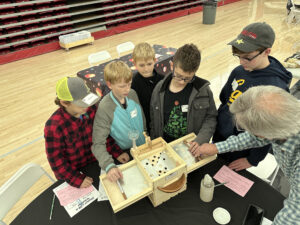Please forgive me for saying so, but Epidemiologists tend to be boring folks. It’s not their fault – they are generally over-educated, brilliant, and thoroughly fascinated by math, statistics and probability. Little more needs to be said.
From my perspective though, epidemiology need NOT be boring. In the interest of full disclosure, I should point out that my judgement may well be clouded by my own skewed metric for boredom, recognizing that I have engaged in a fair amount of work as an epidemiologist myself.
In teaching epidemiology to students in the primary grades, it is best to simply approach the subject matter from the standpoint of probability. Better yet, from the standpoint of gambling, assuming you have no obstacles in the form of parental permission. For me, one of the most satisfying light-bulb moments in such a classroom occurs when students recognize the difference between a health care decision made in the interest of an INDIVIDUAL and a public health decision made for a POPULATION. The gambling analogy compares the difference between the potential outcome of a day of gambling for the gambler and a day of gambling for the casino.
But even such a metaphor loses interest in young students accustomed to adrenaline levels stirred by digital entertainment in the twenty-first century. And so we introduce the “Epidemiology Machine.” This device is nothing more than a marble-rolling platform perforated with scattered holes that marbles can fall through, representing people who contract an infection. A flood of marbles (the “population”) rolls down the platform, with only a certain percent of them falling through the holes – that is, becoming infected. Modifications of the probability of falling through the holes (“becoming infected”) are then made by students sliding two different metal sheets across the platform, representing the mitigations of 1) “Vaccination and Immunity” and 2) “Masking and Physical Distancing.” As each metal sheet slides across the platform, the number of infected people (“marbles” falling through the platform) decreases. The rattling flood of marbles provides a certain level of attention-grabbing noise while students have an opportunity to learn, with guidance from the instructor, the following lessons (depending, of course, upon the appropriate developmental and educational stage of the group of students):
- Vaccinations/Natural Immunity and Masking/Physical Distancing can decrease the number of people in a population who become infected.
- Vaccinations/Natural Immunity and Masking/Physical Distancing can have more than an additive benefit when implemented at the same time and in differing proportions.
- The number of people who become infected in a population from time to time under the same circumstances can vary from trial to trial, such that the only way to get an accurate idea of the number becoming infected is to look at multiple trials and calculate an average. A true lesson in probability, and an opportunity to engage in a little applied math.
- When the mitigations of Vaccinations/Natural Immunity and Masking/Physical Distancing are employed to such a point that, ON AVERAGE, fewer than one person in a population becomes infected by one index case, an epidemic will be extinguished. This number – the number in a population infected by one person who was the initial source of infection – is called the “reproduction number.”
To confirm that the Epidemiology Machine is indeed capable of capturing the attention of students from the 4th through 8th grades (even if only for a short time) see the following photo:
And please present the case to young people that a career in health care and public health can indeed provide daily adventure and real benefits to their communities.

